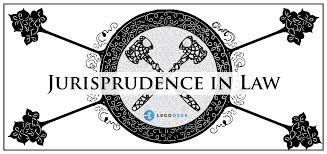Doctrine of Res Gestae-things said and done in the course of a transaction
Under chapter II of the Indian Evidence Act, 1872 (of the relevancy of facts
–section 5 to 55) Section 5 provides that in any suit or proceeding evidence may
be given of every fact in issue and relevant fact. And section 6 to 55 declare
as to which facts are relevant facts.
Among them section 6 declares that facts forming part of the same transaction are relevant.
It provides:
The facts, which though not in issue, are so connected with the fact in issue so as to form part of the same transaction, are relevant, whether occurred at the same time and place or at different times and places.
The principle on which this section is based is the English Law doctrine of Res Gestae, though the section does not expressly make a mention of the term res gestae.
The phrase ‘res gestae is a Latin phrase which literally means “things done†and its English equivalent is things said and done in the course of a transaction. And the doctrine of res gestae says that when in any suit or proceeding a transaction is the fact in issue then in such suit or proceeding evidence may be given of every fact which forms a part of that transaction.
Same Transaction
As mentioned above for a fact to become relevant under section 6 of the Indian Evidence Act, 1872 it is necessary that such fact is so connected with the fact in issue so as to form part of the same transaction.
The term ‘transaction’ has not been defined anywhere in the Indian Evidence Act, 1872. In its etymological meaning the term refers to an affair or a carrying through, but for the purpose of the doctrine a specific definition of the term has been given by J.F.Stephen in his book Stephen’s Digest of Evidence. According to him a transaction is:
A group of facts together to be referred to by a single legal name, a crime, a contract, a wrong or any other subject of inquiry which may be in issue.
And accordingly, the test to determine whether certain facts form part of the same transaction or not is whether they are so related to each other in terms of purpose or as cause and effect or as to constitute one continuous action. [i]
And on the basis of these facts the accused was convicted for murder as no victim of an accident can even think of calling the police and ask for help before the happening. Her call in distress clearly showed that the shooting in question was intentional rather than being accidental.
Illustrations under section 6:
(i) A is accused of the murder of B by beating him. Whatever was said or done by A or B or by the by-standers at the beating, or so shortly before or after it, so as to form part of the transaction, is a relevant fact.
(ii) A sues B for a libel contained in a letter forming part of a correspondence. Letters between the parties relating to the subject out of which the libel arose, and forming part of the correspondence in which it is contained, are relevant facts, though they do not contain the libel itself.
This is so because no limitation can be imposed as to the length of time over which a transaction should extend. A transaction may get completed in a moment or may extend to days, months or even years. Similarly, no restriction can be applied as to the territory within which the transaction must take place, those like a sudden quarrel or shooting or stabbing may occur even in a room while those like a rebellion may cover an entire country. For example, where a conspiracy is entered into by certain people to overthrow the government by force and for this purpose funds are collected at a place B, task force is trained at a place C and the arms are collected at a place D. All these acts are part of the same transaction though not occurring at the same places and time.
A similar illustration is also attached to section 6 of the Indian Evidence Act, 1872:
A is accused of waging war against the government of India by taking part in an armed insurrection in which property is destroyed, troops are attacked and the gaols are broken open. All these occurrences form part of the same transaction though A may not be present at all of them.
An illustration attached to section 6 of the Indian Evidence Act, 1872 also illustrates the point:
Where the question is whether certain goods were delivered in the performance of a contract, the fact that they were delivered to several intermediaries in the process of ultimate delivery to the buyer, is relevant, each successive delivery being a part of the transaction.
In the case of Sabir v. State of Rajasthan [iii]the witnesses reached the place of occurrence of crime and saw the accused fleeing away from there and thus chased him and eventually caught him in a situation where he was found with a blood-stained shirt, pent and shoes and was trying to wash them in the pond nearby. These facts are relevant under section 6 of the Indian Evidence Act, 1872 as they form part of the same transaction.
Here the question was whether a contract was made by the defendant in his personal capacity or as an agent for the plaintiff. The facts of the case of the case were that the defendant had been the agent of plaintiff for quite a long time. And thus, the confidence reposed by the plaintiff in defendant was so high that defendant would enter into contracts on his behalf without even consulting him, if he found them to be beneficial. And the plaintiff never objected to this conduct of the defendant. But since the contract in question proved to be disadvantageous to him, the plaintiff denied to consider it maintaining that it was entered into by the defendant without his permission and thus in a personal capacity.
Here, the omission of the plaintiff to raise an objection against the conduct of the defendant on several previous instances was held to be res gestae. And on this basis the Court found the plaintiff to be bound by the contract in question as the defendant had an implied authority to enter into contracts on his behalf even without consulting him, in case he found them to be advantageous.
Here a husband, his father and mother were prosecute for the murder of his wife. There were evidence to show that she cried out for help and also screamed out that she was being killed by the accused persons. Also, the children who were playing outside exclaimed that their mother was being killed.
These statement of the deceased as well as of the children were held to be relevant as res gestae.
Another important point highlighted by the decision of this case is that apart from the statements of the victim, the statements of bystanders who saw the happening are also relevant. And the statements of the person doing the act are relevant as well. For example, if A assaults B on the neck with a knife and this is seen by C who exclaims, B is killing A, is relevant as res gestae. It is as much a part of the transaction of murder as the gushing out of blood from the wound, the only difference being that the latter is a physical reaction to the act while the former is a psychological reaction by perception.
Another important case on the point is of Thompson v. Trevanian [vi].
Here the deceased woman came running out of the house with a wound on her neck from which she was bleeding and cried out that her husband had caused the injury. This statement of the wife was held to be relevant as res gestae.
However, the case of R v. Beddingfield [vii], a case with similar facts presents a different point of view.
Here, a woman with a cut throat came running out of a house. She was crying continuously but did not say a word about how the injury was caused. However, as soon as her aunt came she told her, O Aunt, see what Beddingfield has done to me.
Cockburn C.J., delivering the judgement explained:
Such statements in order that they may be admissible as res gestae should be contemporaneous with the transaction in issue, so as to give no time/opportunity for concoction or fabrication. The statements should not amount to a mere of a past occurrence.
Thus, simply the statements should be forced out of emotions generated by the even rather than be a narrative of a past event, they should be made in circumstances of spontaneity or involvement in the event.
Lastly, the Indian case of Rattan Singh v. State of Himachal Pradesh [viii] presents a different example in this regard.
Here, shortly before the incident in which a woman died of a gunshot, she exclaimed that a man was standing near her with a gun in his hand. The statement was held to be res gestae and thus, relevant.
Hearsay evidence refers to the statement by a person who has not himself seen the happening of the transaction, but has heard about it from others. For example, a person who has himself witnessed an accident can give evidence of it to the court. But his wife who heard about the accident from him, cannot give evidence of it to the court, her knowledge being indirect or hearsay.
But under the doctrine of Res Gestae hearsay is also admissible.
For example, in the case of R v. Foster [ix] the deceased was killed in an accident by a speeding truck. The witness had only seen the speeding vehicle towards the deceased and not the actual accident, his view being blocked by another vehicle coming from the opposite direction. Immediately after the accident the witness went to the deceased and he explained to him the nature of the accident.
The witness was allowed to give evidence of what the deceased said, it being a part of the transaction.
In another case of Badruddin v. State of Maharashtra [x] the accused dragged the deceased from his house to Chowk area and began to beat him. Z who was present when the beating began ran to the village police patel, while the beating was in progress and told him that the deceased was being beaten by the accused. The police Patel was allowed to give evidence of what Z told him, it being a part of the transaction.
Conclusion
To conclude it may be stated that the affairs of men are not simple but involve a complex aggregate of circumstances which are so interconnected as to be hardly separable from each other. And thus, as explained by Peter Murphy in his book A Practical Approach to Evidence, to state a fact or event in isolation without a reference to its precedents, antecedents or contemporaries in time, place, or surrounding circumstances, may render the fact difficult or even impossible to comprehend. [xi]
Other facts or circumstances may be so related with the fact in issue as to be in reality the part and parcel of the same transaction. Such facts are considered as relevant under the Indian Evidence Act ,1872 by virtue of the doctrine of res gestae and hence, evidence as to them may be given in any suit or proceeding.
End-Notes:
[i] Lal, Batuk. (2015).The Law of Evidence. Allahabad. Central Law Agency.
[ii] (1971) 1 WLR 801.
[iii] 2016 Cr LJ 4686.
[iv] Singh, Avtar. (2016).Principles of the Law of Evidence. Allahabad. Central Law Publications.
[v] 1974 SC 779: 1974 Cr LJ 664: AIR 1974 SC 778.
[vi] (1695) Skin 402.
[vii] (1879) 14 Cox C.C. 341.
[viii] AIR 1997 SC 768: (1997) 4 SCC 161.
[ix] (1834) 6 C & C p.325: 172 ER 1261
[x] AIR 1981 SC 1223: 1981 Cr LJ 729
[xi] Ratanlal & Dhirajlal. (2017).The Law of Evidence. Haryana. Lexis Nexis
Among them section 6 declares that facts forming part of the same transaction are relevant.
It provides:
The facts, which though not in issue, are so connected with the fact in issue so as to form part of the same transaction, are relevant, whether occurred at the same time and place or at different times and places.
The principle on which this section is based is the English Law doctrine of Res Gestae, though the section does not expressly make a mention of the term res gestae.
The phrase ‘res gestae is a Latin phrase which literally means “things done†and its English equivalent is things said and done in the course of a transaction. And the doctrine of res gestae says that when in any suit or proceeding a transaction is the fact in issue then in such suit or proceeding evidence may be given of every fact which forms a part of that transaction.
Same Transaction
As mentioned above for a fact to become relevant under section 6 of the Indian Evidence Act, 1872 it is necessary that such fact is so connected with the fact in issue so as to form part of the same transaction.
The term ‘transaction’ has not been defined anywhere in the Indian Evidence Act, 1872. In its etymological meaning the term refers to an affair or a carrying through, but for the purpose of the doctrine a specific definition of the term has been given by J.F.Stephen in his book Stephen’s Digest of Evidence. According to him a transaction is:
A group of facts together to be referred to by a single legal name, a crime, a contract, a wrong or any other subject of inquiry which may be in issue.
And accordingly, the test to determine whether certain facts form part of the same transaction or not is whether they are so related to each other in terms of purpose or as cause and effect or as to constitute one continuous action. [i]
The case of Ratten v. Queen [ii] is an illustration on the point
Here a man was charged with the murder of his wife. He defended himself in the court saying that the shot went off accidentally. However, there was evidence to show that the deceased wife contacted the telephone operator and said, “Get me the police pleaseâ€. But before the operator could connect call to the police the lady who spoke in distress gave her address and then the call ended suddenly. Thereafter the police went to the address so given and found the dead body of a woman, that is, the wife of the accused.Lord Wilberforce delivering the judgement explained:
The act of the deceased of calling the telephone operator and the words said by her on the call are relevant facts here as they form part of the same transaction which is in issue before the court.And on the basis of these facts the accused was convicted for murder as no victim of an accident can even think of calling the police and ask for help before the happening. Her call in distress clearly showed that the shooting in question was intentional rather than being accidental.
Illustrations under section 6:
(i) A is accused of the murder of B by beating him. Whatever was said or done by A or B or by the by-standers at the beating, or so shortly before or after it, so as to form part of the transaction, is a relevant fact.
(ii) A sues B for a libel contained in a letter forming part of a correspondence. Letters between the parties relating to the subject out of which the libel arose, and forming part of the correspondence in which it is contained, are relevant facts, though they do not contain the libel itself.
The Time and Space
Section 6 makes an express mention that it is not necessary the facts have occurred at the same time and place in order that they form part of the transaction in issue.This is so because no limitation can be imposed as to the length of time over which a transaction should extend. A transaction may get completed in a moment or may extend to days, months or even years. Similarly, no restriction can be applied as to the territory within which the transaction must take place, those like a sudden quarrel or shooting or stabbing may occur even in a room while those like a rebellion may cover an entire country. For example, where a conspiracy is entered into by certain people to overthrow the government by force and for this purpose funds are collected at a place B, task force is trained at a place C and the arms are collected at a place D. All these acts are part of the same transaction though not occurring at the same places and time.
A similar illustration is also attached to section 6 of the Indian Evidence Act, 1872:
A is accused of waging war against the government of India by taking part in an armed insurrection in which property is destroyed, troops are attacked and the gaols are broken open. All these occurrences form part of the same transaction though A may not be present at all of them.
Acts as Res Gestae
As mentioned earlier in the case of Ratten v. Queen, the act of the deceased wife of calling the telephone operator and asking to connect her to the police, was res gestae.An illustration attached to section 6 of the Indian Evidence Act, 1872 also illustrates the point:
Where the question is whether certain goods were delivered in the performance of a contract, the fact that they were delivered to several intermediaries in the process of ultimate delivery to the buyer, is relevant, each successive delivery being a part of the transaction.
In the case of Sabir v. State of Rajasthan [iii]the witnesses reached the place of occurrence of crime and saw the accused fleeing away from there and thus chased him and eventually caught him in a situation where he was found with a blood-stained shirt, pent and shoes and was trying to wash them in the pond nearby. These facts are relevant under section 6 of the Indian Evidence Act, 1872 as they form part of the same transaction.
Omissions as Res Gestae
It is not only an act that can be the part of a transaction but omissions too can be the same. The case of Milne v. Leisler [iv] is an illustration on the point.Here the question was whether a contract was made by the defendant in his personal capacity or as an agent for the plaintiff. The facts of the case of the case were that the defendant had been the agent of plaintiff for quite a long time. And thus, the confidence reposed by the plaintiff in defendant was so high that defendant would enter into contracts on his behalf without even consulting him, if he found them to be beneficial. And the plaintiff never objected to this conduct of the defendant. But since the contract in question proved to be disadvantageous to him, the plaintiff denied to consider it maintaining that it was entered into by the defendant without his permission and thus in a personal capacity.
Here, the omission of the plaintiff to raise an objection against the conduct of the defendant on several previous instances was held to be res gestae. And on this basis the Court found the plaintiff to be bound by the contract in question as the defendant had an implied authority to enter into contracts on his behalf even without consulting him, in case he found them to be advantageous.
Statements as Res Gestae
The statements which accompany physical happenings are also considered as a part of the transaction. For example, an injured person crying under pain or for help. The case of Sawal Das v. State of Bihar [v] is a leading case on the point.Here a husband, his father and mother were prosecute for the murder of his wife. There were evidence to show that she cried out for help and also screamed out that she was being killed by the accused persons. Also, the children who were playing outside exclaimed that their mother was being killed.
These statement of the deceased as well as of the children were held to be relevant as res gestae.
Another important point highlighted by the decision of this case is that apart from the statements of the victim, the statements of bystanders who saw the happening are also relevant. And the statements of the person doing the act are relevant as well. For example, if A assaults B on the neck with a knife and this is seen by C who exclaims, B is killing A, is relevant as res gestae. It is as much a part of the transaction of murder as the gushing out of blood from the wound, the only difference being that the latter is a physical reaction to the act while the former is a psychological reaction by perception.
Another important case on the point is of Thompson v. Trevanian [vi].
Here the deceased woman came running out of the house with a wound on her neck from which she was bleeding and cried out that her husband had caused the injury. This statement of the wife was held to be relevant as res gestae.
However, the case of R v. Beddingfield [vii], a case with similar facts presents a different point of view.
Here, a woman with a cut throat came running out of a house. She was crying continuously but did not say a word about how the injury was caused. However, as soon as her aunt came she told her, O Aunt, see what Beddingfield has done to me.
Cockburn C.J., delivering the judgement explained:
Such statements in order that they may be admissible as res gestae should be contemporaneous with the transaction in issue, so as to give no time/opportunity for concoction or fabrication. The statements should not amount to a mere of a past occurrence.
Thus, simply the statements should be forced out of emotions generated by the even rather than be a narrative of a past event, they should be made in circumstances of spontaneity or involvement in the event.
Lastly, the Indian case of Rattan Singh v. State of Himachal Pradesh [viii] presents a different example in this regard.
Here, shortly before the incident in which a woman died of a gunshot, she exclaimed that a man was standing near her with a gun in his hand. The statement was held to be res gestae and thus, relevant.
Hearsay as Res Gesate
The doctrine of res gestae is one of the exceptions to the principle of hearsay.Hearsay evidence refers to the statement by a person who has not himself seen the happening of the transaction, but has heard about it from others. For example, a person who has himself witnessed an accident can give evidence of it to the court. But his wife who heard about the accident from him, cannot give evidence of it to the court, her knowledge being indirect or hearsay.
But under the doctrine of Res Gestae hearsay is also admissible.
For example, in the case of R v. Foster [ix] the deceased was killed in an accident by a speeding truck. The witness had only seen the speeding vehicle towards the deceased and not the actual accident, his view being blocked by another vehicle coming from the opposite direction. Immediately after the accident the witness went to the deceased and he explained to him the nature of the accident.
The witness was allowed to give evidence of what the deceased said, it being a part of the transaction.
In another case of Badruddin v. State of Maharashtra [x] the accused dragged the deceased from his house to Chowk area and began to beat him. Z who was present when the beating began ran to the village police patel, while the beating was in progress and told him that the deceased was being beaten by the accused. The police Patel was allowed to give evidence of what Z told him, it being a part of the transaction.
Conclusion
To conclude it may be stated that the affairs of men are not simple but involve a complex aggregate of circumstances which are so interconnected as to be hardly separable from each other. And thus, as explained by Peter Murphy in his book A Practical Approach to Evidence, to state a fact or event in isolation without a reference to its precedents, antecedents or contemporaries in time, place, or surrounding circumstances, may render the fact difficult or even impossible to comprehend. [xi]
Other facts or circumstances may be so related with the fact in issue as to be in reality the part and parcel of the same transaction. Such facts are considered as relevant under the Indian Evidence Act ,1872 by virtue of the doctrine of res gestae and hence, evidence as to them may be given in any suit or proceeding.
End-Notes:
[i] Lal, Batuk. (2015).The Law of Evidence. Allahabad. Central Law Agency.
[ii] (1971) 1 WLR 801.
[iii] 2016 Cr LJ 4686.
[iv] Singh, Avtar. (2016).Principles of the Law of Evidence. Allahabad. Central Law Publications.
[v] 1974 SC 779: 1974 Cr LJ 664: AIR 1974 SC 778.
[vi] (1695) Skin 402.
[vii] (1879) 14 Cox C.C. 341.
[viii] AIR 1997 SC 768: (1997) 4 SCC 161.
[ix] (1834) 6 C & C p.325: 172 ER 1261
[x] AIR 1981 SC 1223: 1981 Cr LJ 729
[xi] Ratanlal & Dhirajlal. (2017).The Law of Evidence. Haryana. Lexis Nexis
Law Article in India
Legal Question & Answers
Lawyers in India - Search By City
LawArticles
How To File For Mutual Divorce In Delhi

How To File For Mutual Divorce In Delhi Mutual Consent Divorce is the Simplest Way to Obtain a D...
Increased Age For Girls Marriage

It is hoped that the Prohibition of Child Marriage (Amendment) Bill, 2021, which intends to inc...
Facade of Social Media

One may very easily get absorbed in the lives of others as one scrolls through a Facebook news ...
Section 482 CrPc - Quashing Of FIR: Guid...

The Inherent power under Section 482 in The Code Of Criminal Procedure, 1973 (37th Chapter of t...
The Uniform Civil Code (UCC) in India: A...

The Uniform Civil Code (UCC) is a concept that proposes the unification of personal laws across...
Role Of Artificial Intelligence In Legal...

Artificial intelligence (AI) is revolutionizing various sectors of the economy, and the legal i...








Please Drop Your Comments